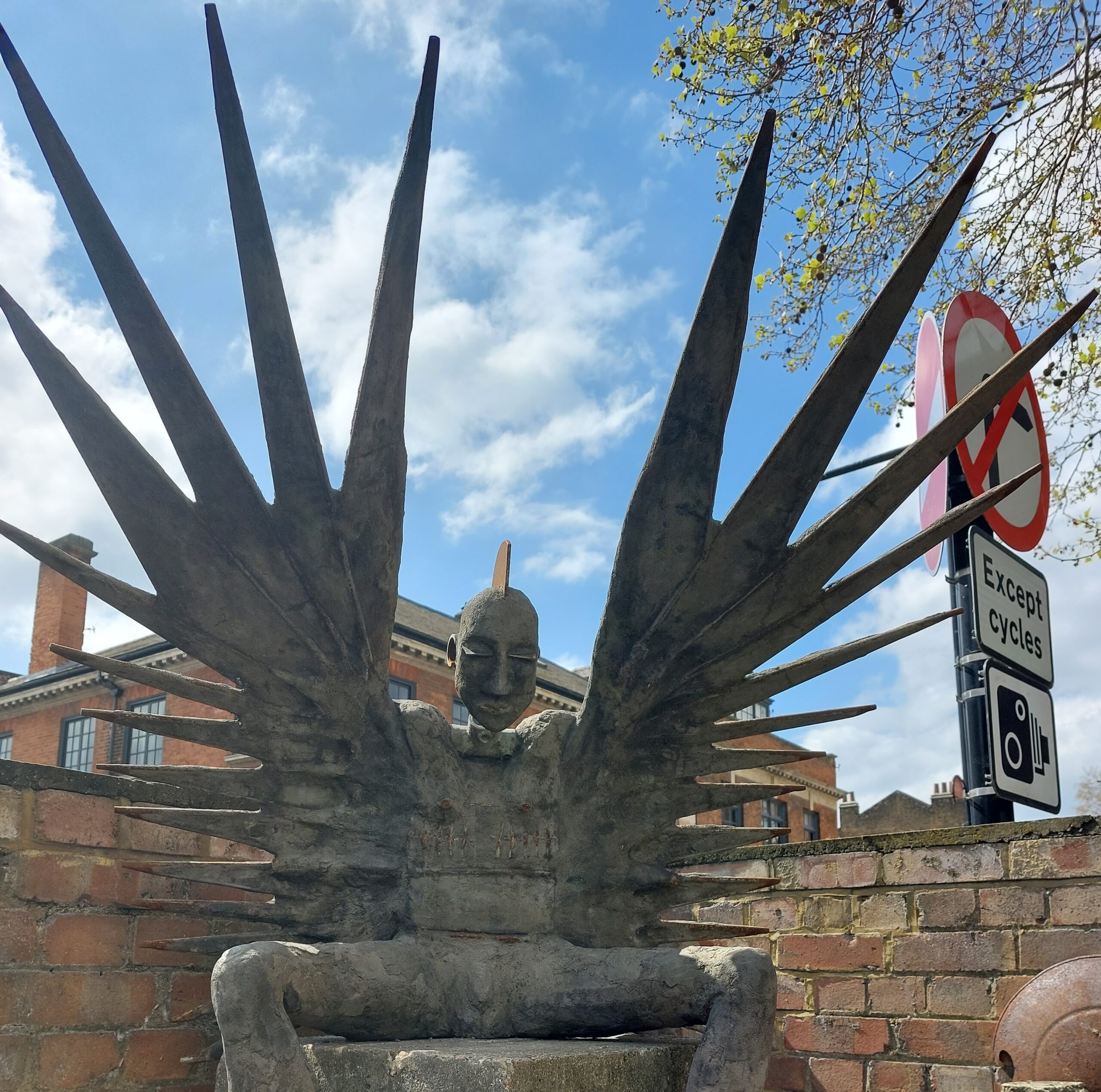The Wild Gees in London
From the northern wilds of Iceland, the Wild Gees flew to an even chillier London. Our original plan had been to visit the Vagina Museum but their sudden eviction earlier this year (please help them find a new home) meant our trip started slightly aimless. We managed to dig out some women’s history in London all the same. We visited a graveyard for Geese, a spooky fireplace, some defunct bookshops, and we spotted a rake of blue plaques. Our trip coincided with a big Extinction Rebellion event, so we did a bit of planet-saving* too.
In the 16th century, the southside of the river Thames was considered beyond the godliness of the city of London. It was where sex workers, criminals and, em, theatres (like Shakespeare’s Globe) operated. In Southwark (couldn’t possibly pronounce it, it’s got silent letters) is Crossbones, the “graveyard of the outcast dead”. The Winchester Geese were sex workers licenced to work within the liberties of the Bishop of Winchester. When they died, often after short, brutal lives, they were not considered worthy of Christian burial.
“You don’t know me yet dear
Winchester GooSe
You will dear, I promise you.
I am a tricksy tart dear
My aim is to astonish you”
The graveyard became so full of them and other outcasts, such as suicides and paupers, it was deemed “completely overcharged with dead” in 1853. It remained largely forgotten until archaeologists rediscovered it during excavations for a London Underground extension. An estimated 15,000 remains were found, around a third of which were pregnant. The skull of a 16 year old girl, possibly known as Elizabeth Mitchell, was eaten away by syphilis. A sculpture in the graveyard represents her skull using copper coins. The site is now managed by Friends of Crossbones as a Garden of Remembrance.
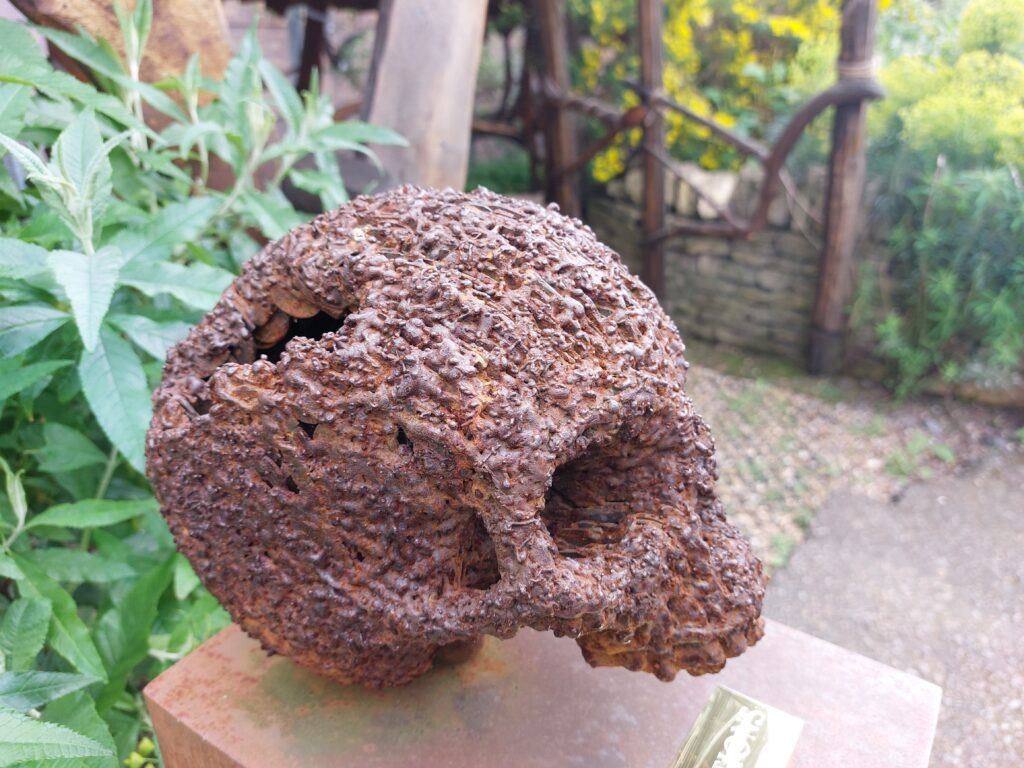
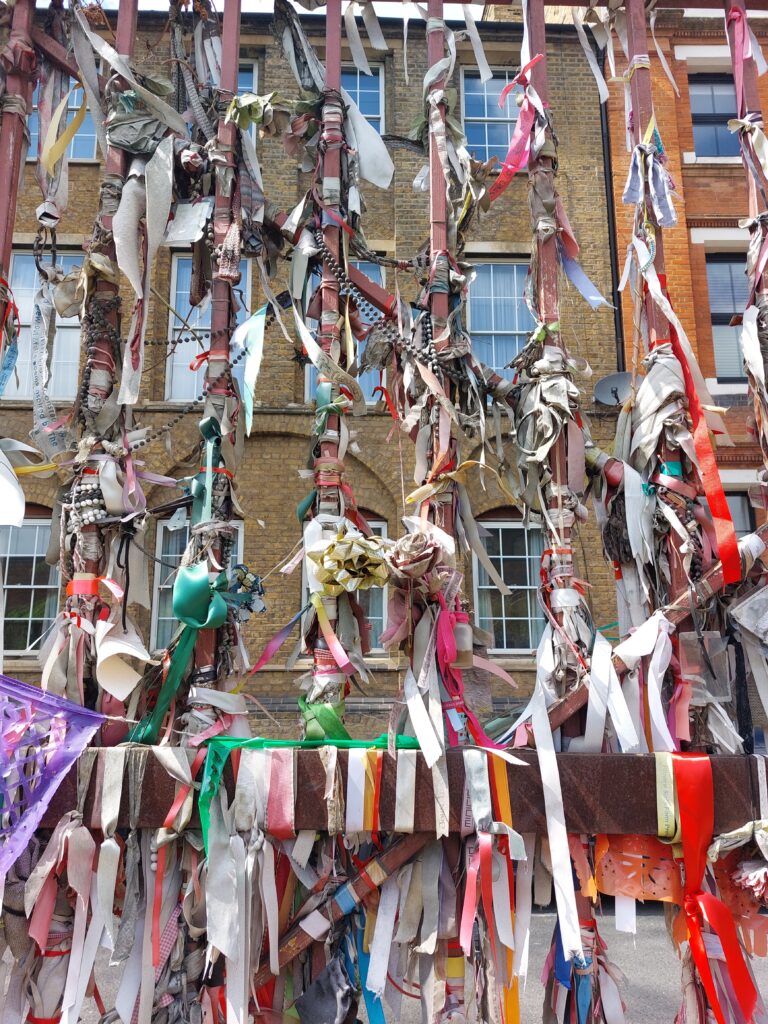
On 22 July every year, Southwark Cathedral conducts “an act of remembrance, regret and restoration”. We read about this in Peter Ross’s excellent book A Tomb with a View so we had to visit Crossbones. If we’d timed it better, we could have taken part in one of the monthly vigils, “a magical act of sacred profanity”where ribbons are tied in remembrance of the Geese and other ‘outcasts’, including the LGBTQ+ community. Various memorials have been added to the site over the years, like this stunning Trans Angel. Made of cement and glue ‘fondue’ and metal by Svar Simpson and Lola Lancaster, it was installed for Trans Day of Remembrance 2022. We left a candle, which had previously illuminated the stage of the Globe, in remembrance.
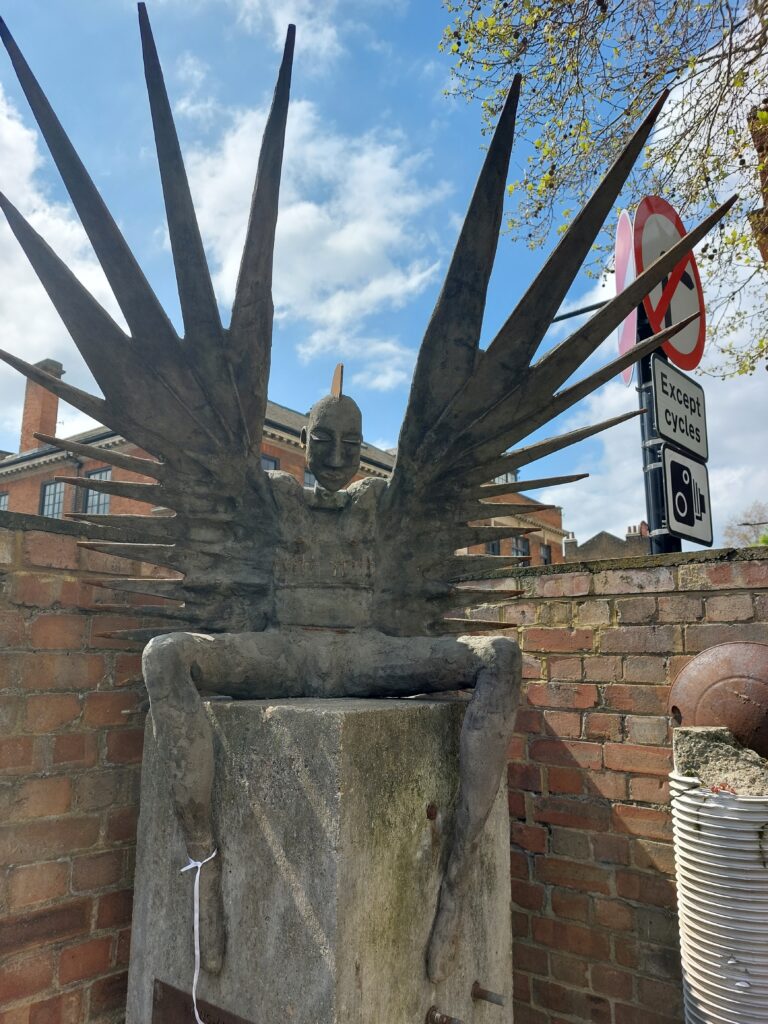
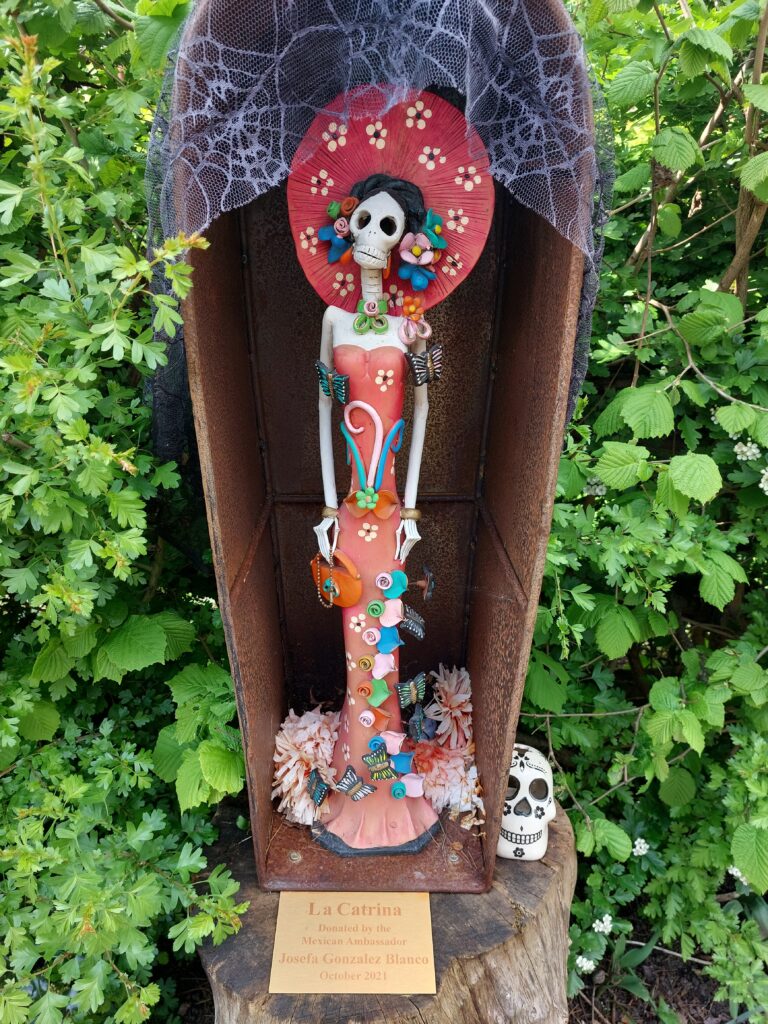
A La Catrina statue was donated to Crossbones by the Mexican Ambassador to mark the Day of the Dead 2021. We had the strong sense that an Irish monument should be added, If we’d had a Sheela na Gig we would have donated it on the spot. Speaking to Mick, one of the caretakers of the space, the north west corner of the graveyard was known as ‘the Irish corner’. Given the size of the Irish community in London, it’s not surprising that we would have comprised a number of the Winchester Geese, the suicides, and certainly the paupers. We think it would be fitting for the Irish Embassy in London to donate something. We’ve written to them suggesting as much. Watch this space.
We heard of artist Pamela Colman Smith (aka Pixie) from The Second Shelf bookshop, which produces a fabulous but extremely sporadic magazine/catalogue. You may have seen Colman Smith’s work if you’ve ever had your tarot read, as she illustrated the Rider-Waite tarot deck. She received no credit for this in her lifetime but it is now called the Rider-Waite-Smith deck. A member of the Golden Dawn, she knew Yeats and illustrated some of his poetry. She also contributed to the Suffrage Atelier, a collective creating artwork for the suffragettes. Despite her talent, she never knew financial success and died penniless in Cornwall in 1951, likely buried in an unmarked grave. From tragic, to extremely odd – when the house she’d lived in was being renovated a few years ago, some magic pals went to Cornwall and saved Pamela’s fireplace which then found a home in Treadwell’s bookshop.
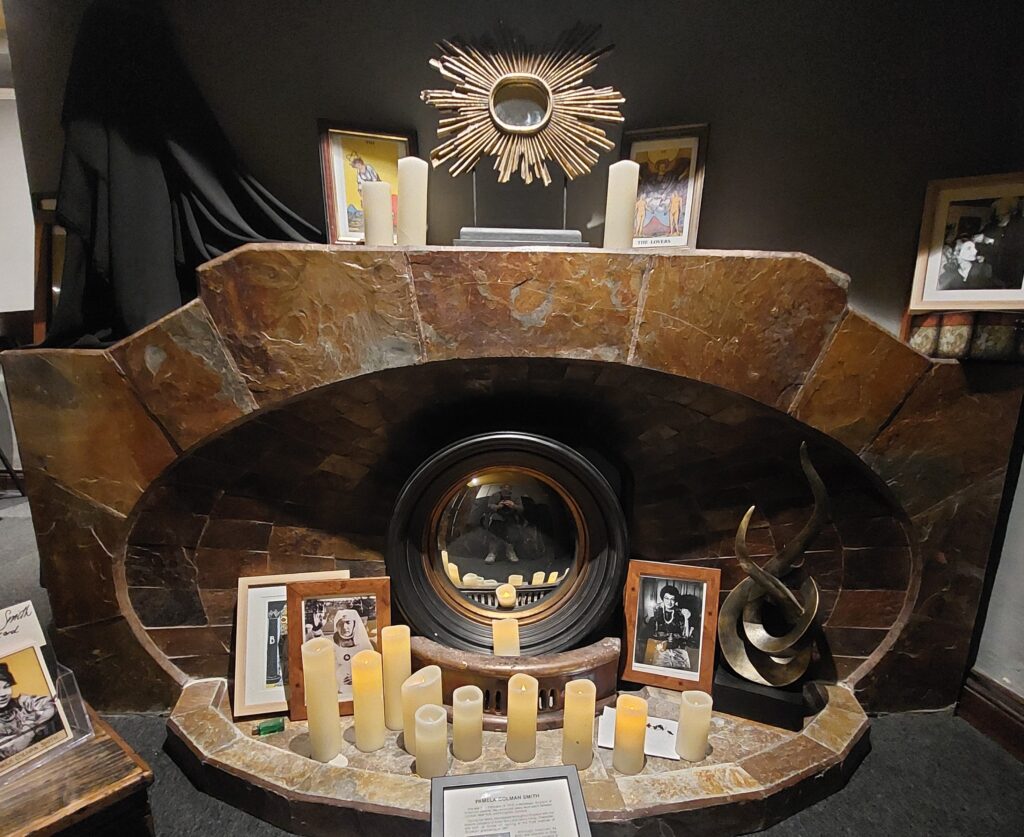
Treadwell’s is an occult bookshop, which when we entered smelled pleasantly of incense. When we approached the guy at the counter about the fireplace, he whispered enigmatically that he would “prepare the space” and disappeared downstairs. After a few minutes, we were ushered into a basement room draped with black fabric, with the art deco fireplace as a centrepiece surrounded by candles. There were leaflets about Colman Smith and a seat on which to sit and contemplate her life. It would be easy to scoff but actually it was a beautiful moment and we were moved more than we expected to be. We wished that we had something to offer in remembrance of a neglected talent whose life should not have ended in poverty and obscurity.
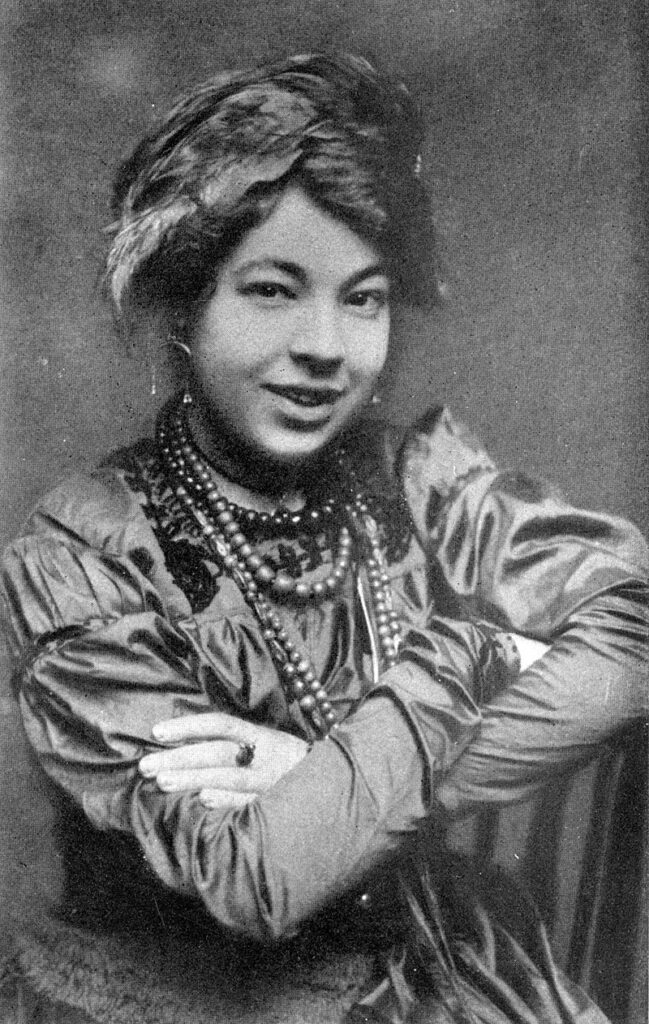
Stumbling back into the light, having bought the first of many books from London’s bookshops, we happened upon a blue plaque commemorating suffragist Millicent Fawcett. Coincidentally we had planned to visit her statue in Parliament Square, site of the XR protest. The feckers had cordoned it off for reasons to do with the c*r*nation. We had hoped to get proper photos of the Irish suffragists who are commemorated on the plinth. Yet another plan foiled.
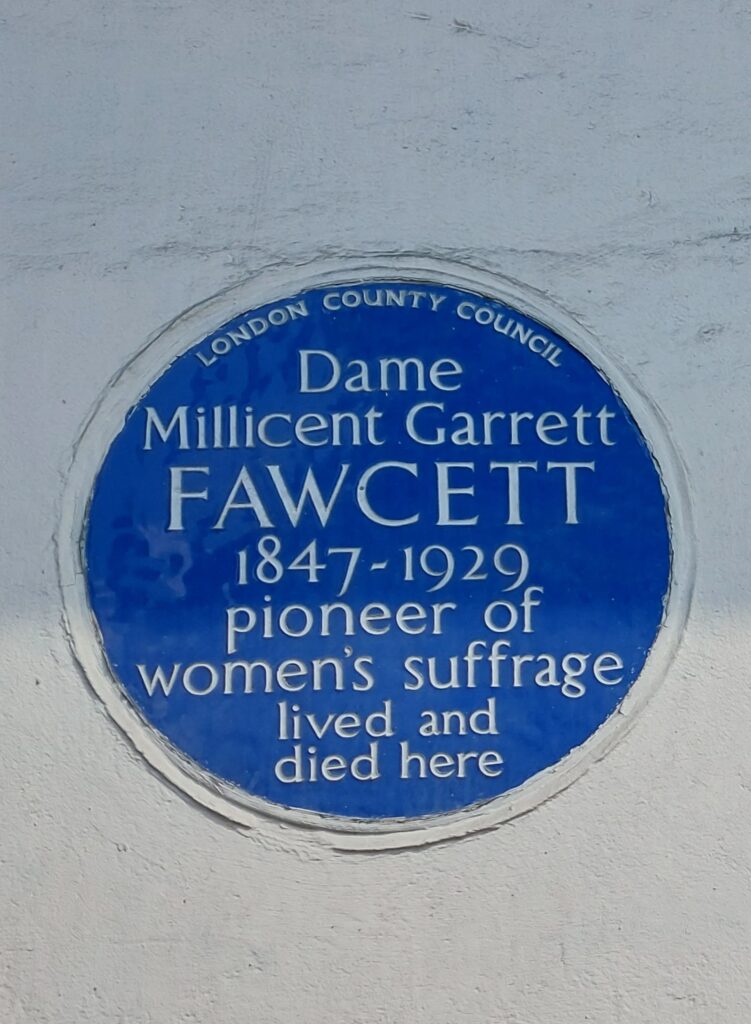
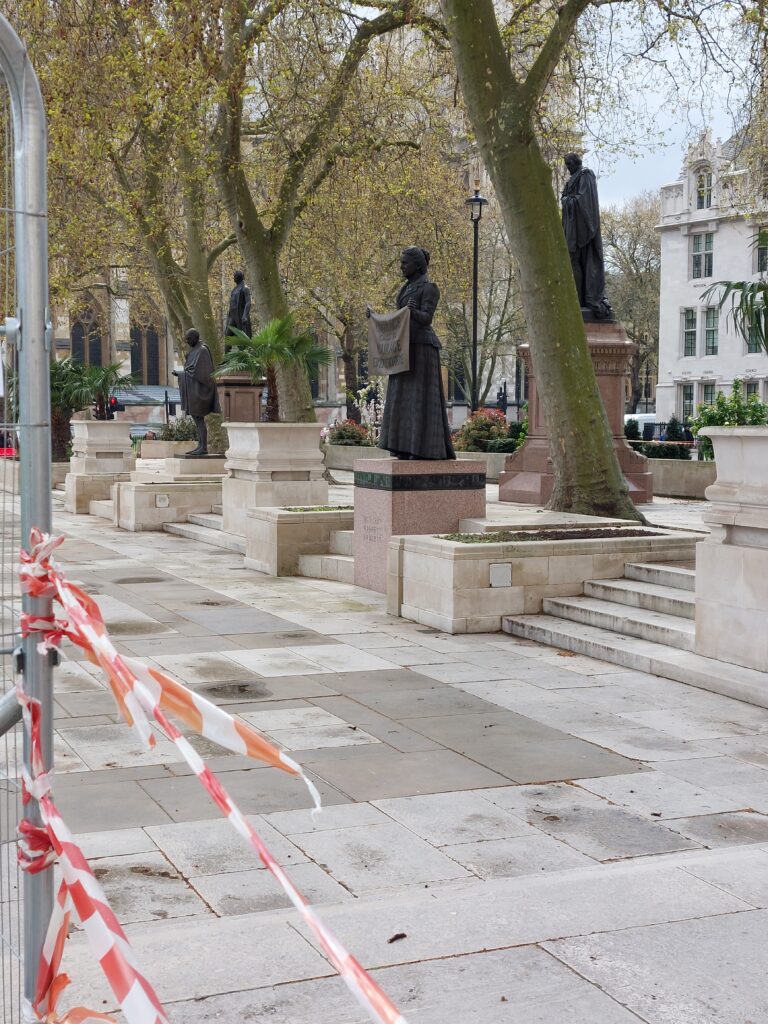
We came across another blue plaque for Lady Ottoline Morrell, a literary hostess and patron of the arts. Apart from her legacy of memoir, photography and correspondence with people like Bertrand Russell, she has been portrayed in plays, films, books and photographed by Cecil Beaton. We found a beautiful plaque commemorating Sarah Bernhardt laying the foundation stone of a building (of course, we forgot to note which building). A stage actor and one of the first to act in motion pictures, she was “the queen of the pose and the princess of the gesture”. Another star of stage and screen, Jessie Matthews, was born on Berwick Street. She was dubbed “the dancing divinity” for her musical stage roles. Some of the plaques were placed very high up making them difficult to photograph so apologies for the squint images.
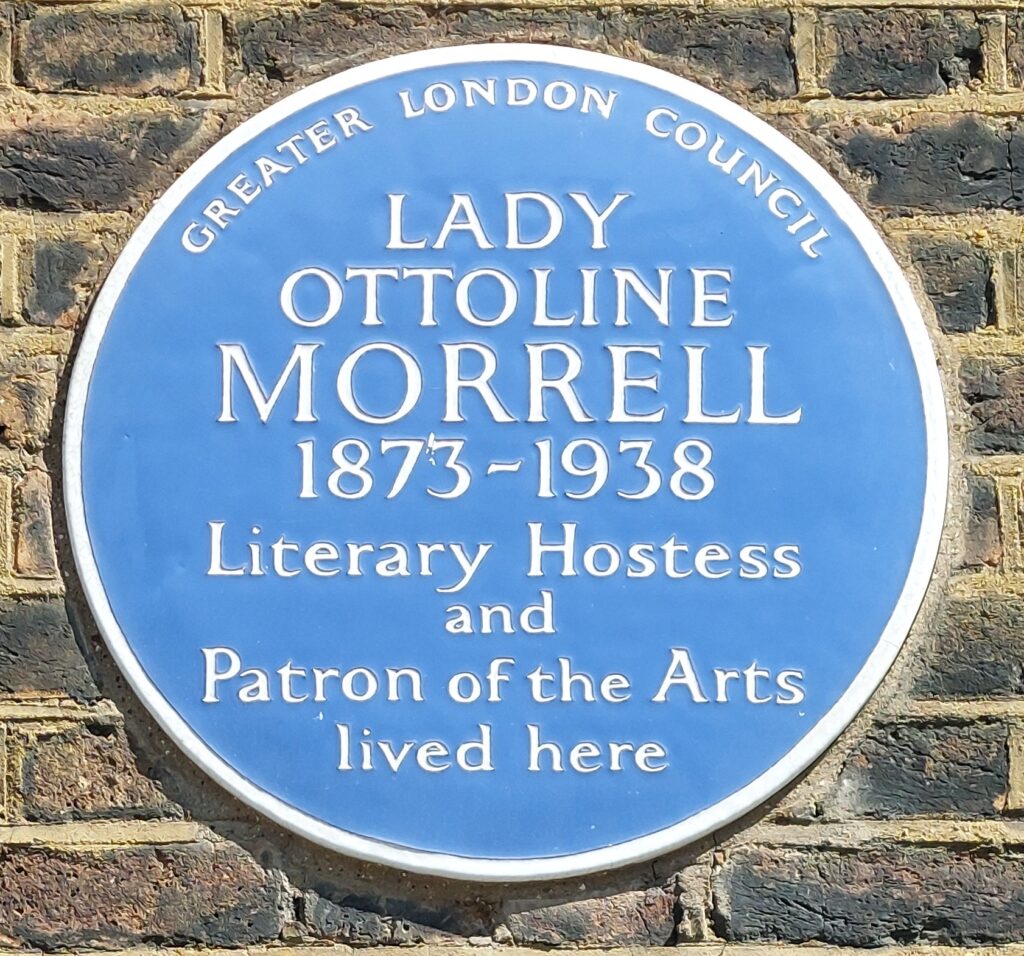
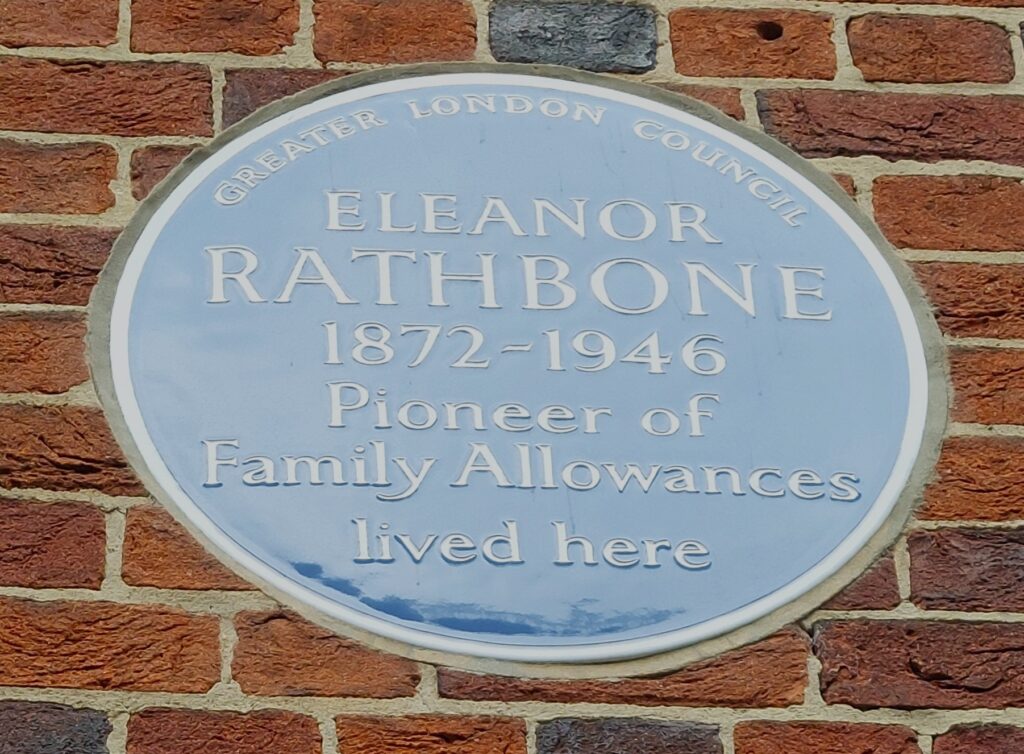
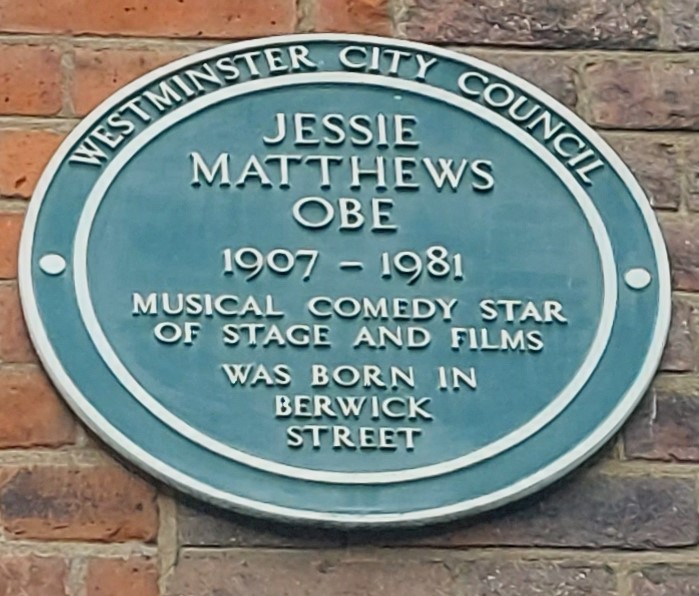
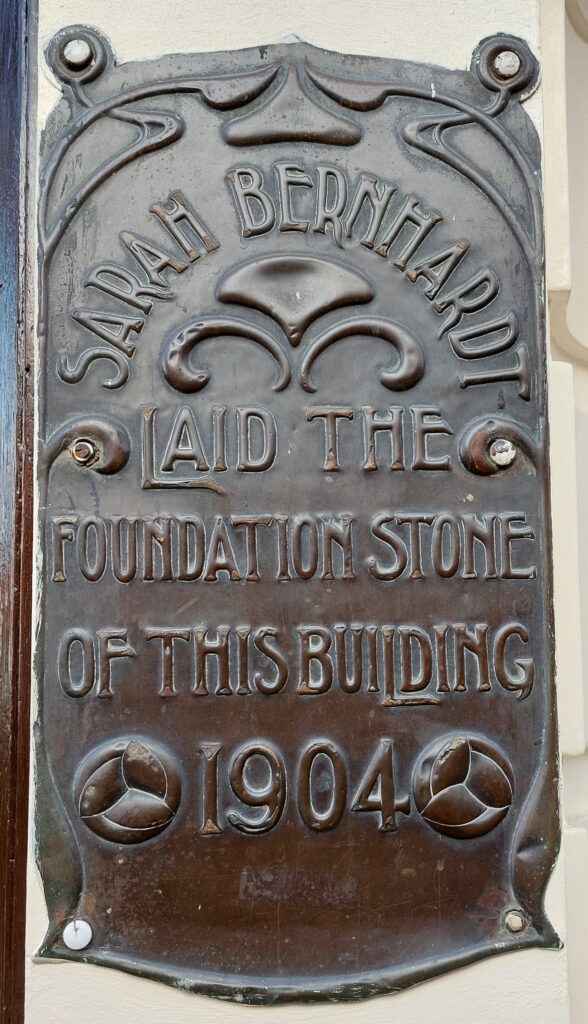
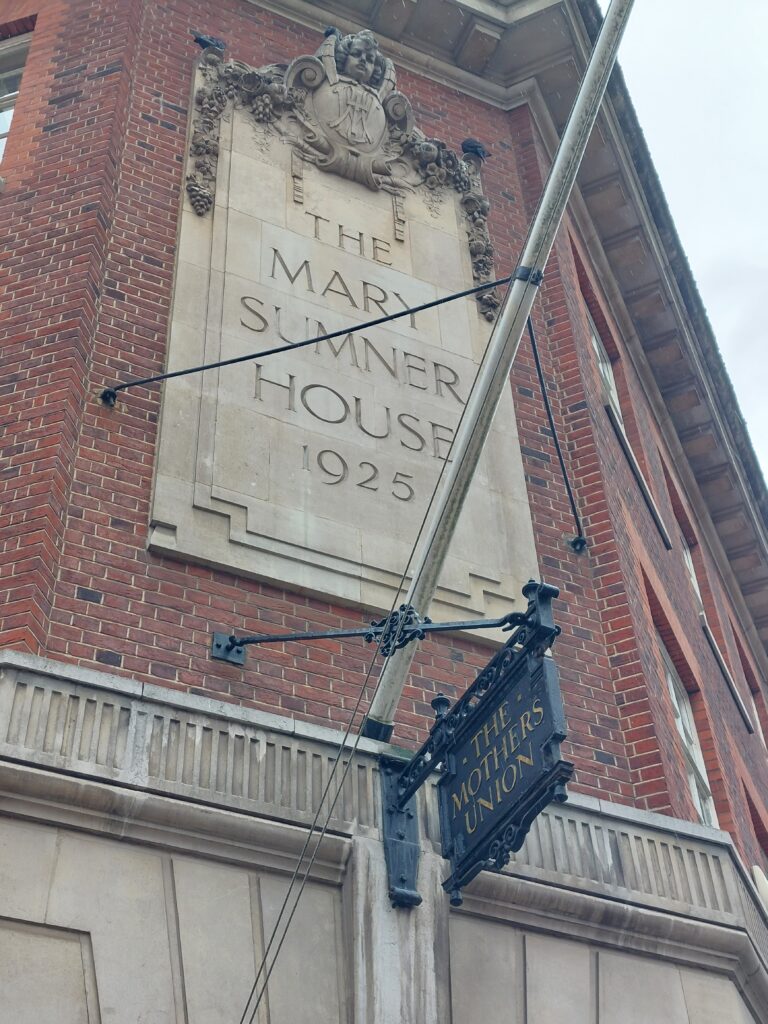
While attending an XR protest on Tufton Street, we found two more: Mary Sumner founded the Mothers Union in 1876, which now has four million members worldwide. Eleanor Rathbone was a suffragist, anti-fascist and independent MP who pioneered family allowances. Part of the larger XR event, the Tufton Street protest was by Writers Rebel, one of whom was Zadie Smith. Zadie was wearing a top that said What would Buffy do? Avert a (climate) apocalypse is what Buffy would do! Having spent a couple of days wandering along its banks, it strikes us that a city with its feet in the water like London should be more scared than it appears to be of climate change.
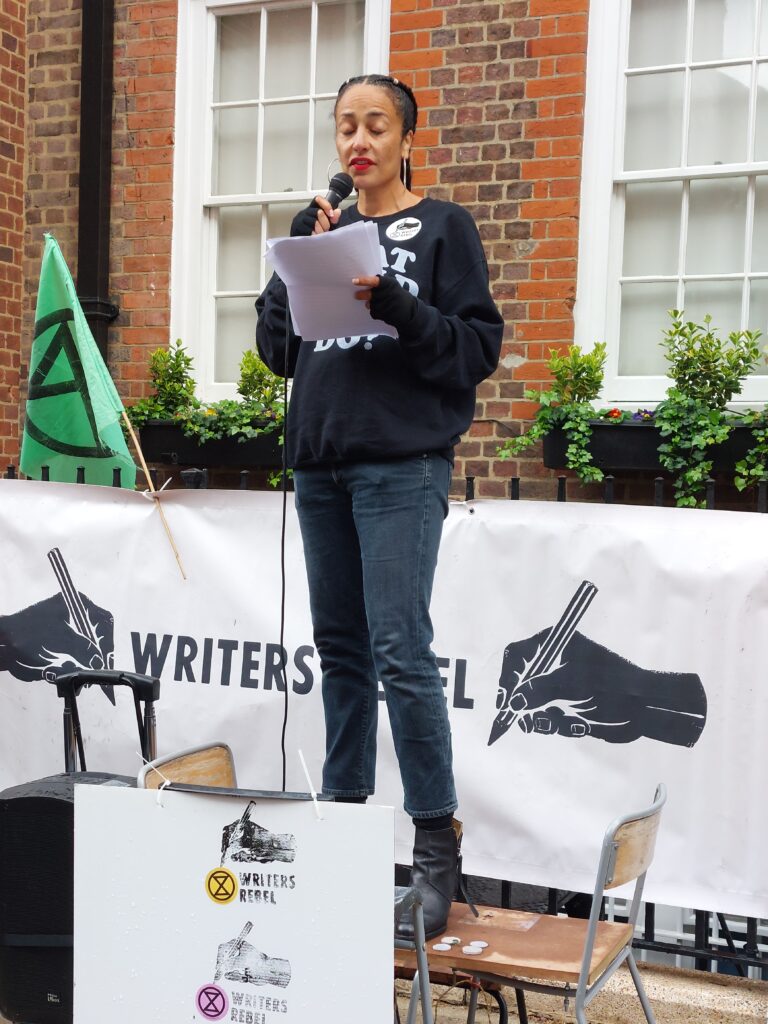
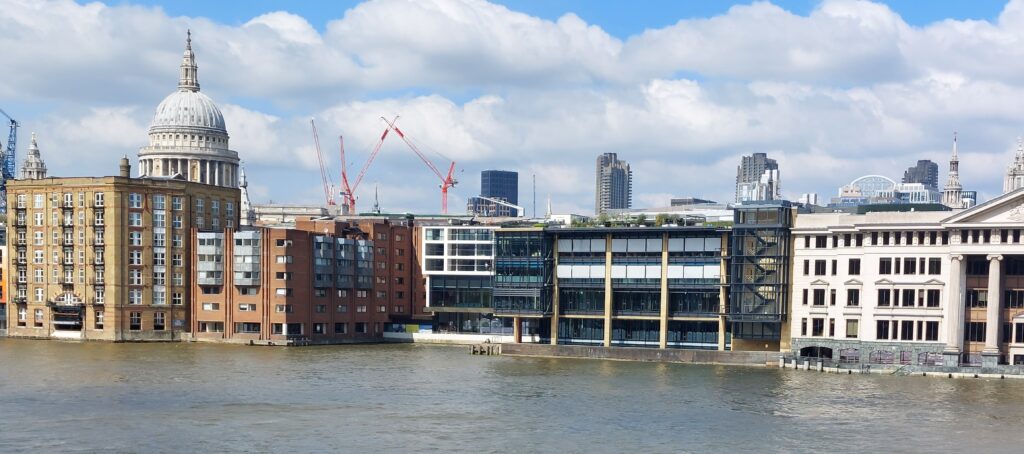
Before we left London, we had to pay tribute to some lost feminist icons. Vivienne Westwood, who died last December, created the punk aesthetic. Her flagship store had some stunning pieces but was jaw droppingly expensive. We loved its images of Viv’s activism though (and were tempted by the £69 tights). Strolling down the Kings Road with our Mary Quant tote, we couldn’t find the site of Bazaar, her shop that defined the 60s London look. Mary died in April this year, having revolutionised the accessibility of women’s fashion and branding as we know it. Our respect for two queens of fashion.
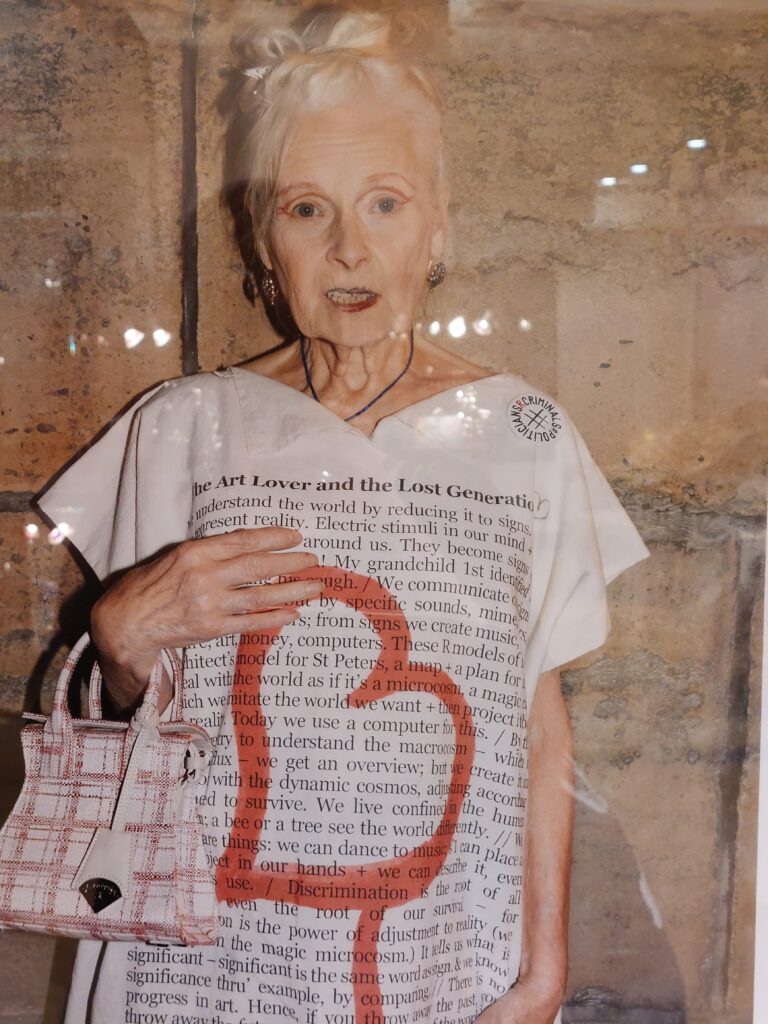
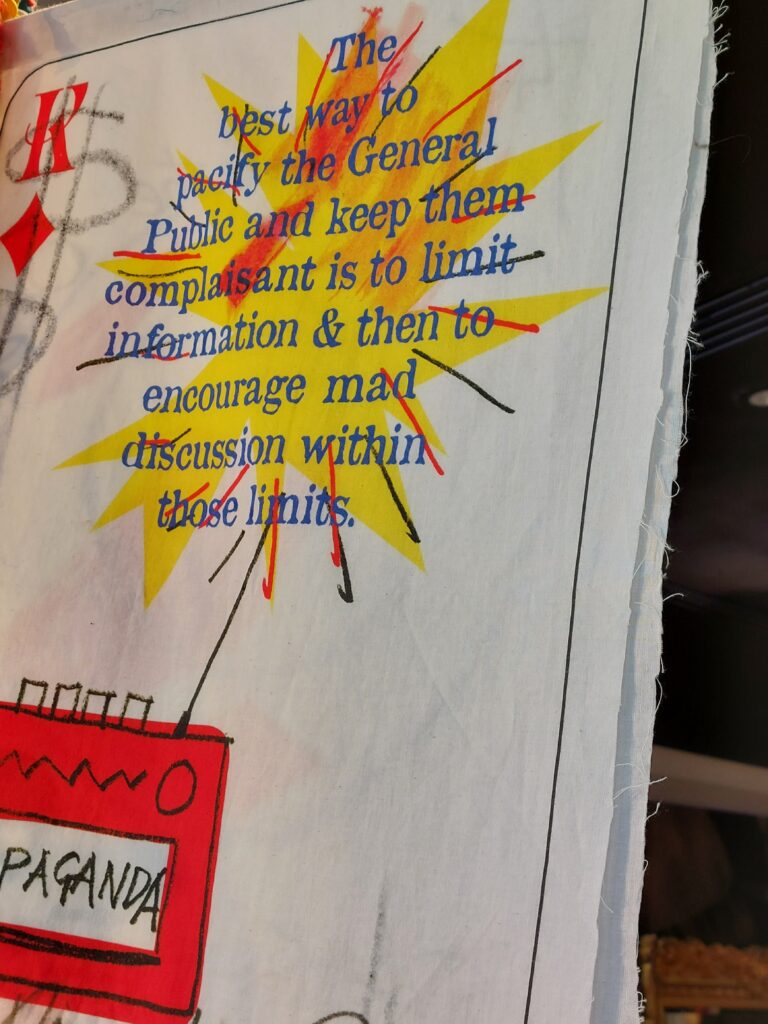
Feeling nostalgic, we visited the Charing Cross site of the Silver Moon feminist bookshop of our 1990s London youth. It’s now a cool wee vintage shop. We also peeked into the magical courtyard near Soho where the incomparable Second Shelf Books used to be. They are still going online but the site is now vacant. We entertained dreams of the also homeless Vagina Museum teaming up with the Second Shelf and creating a wonderland of gees and books.
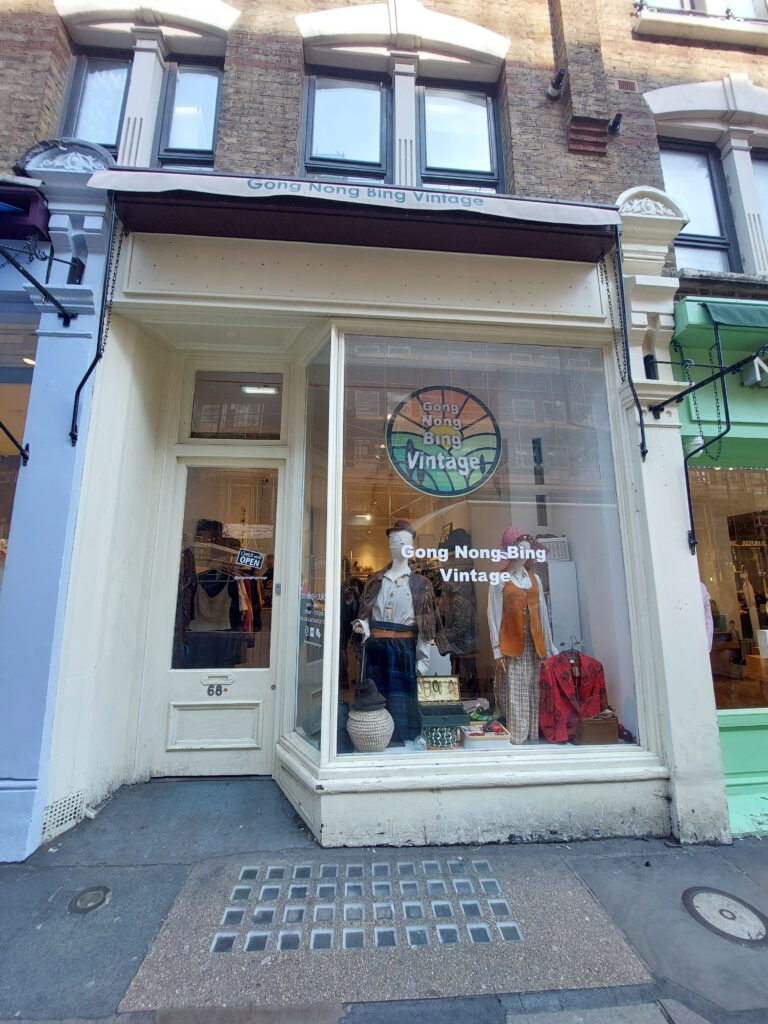
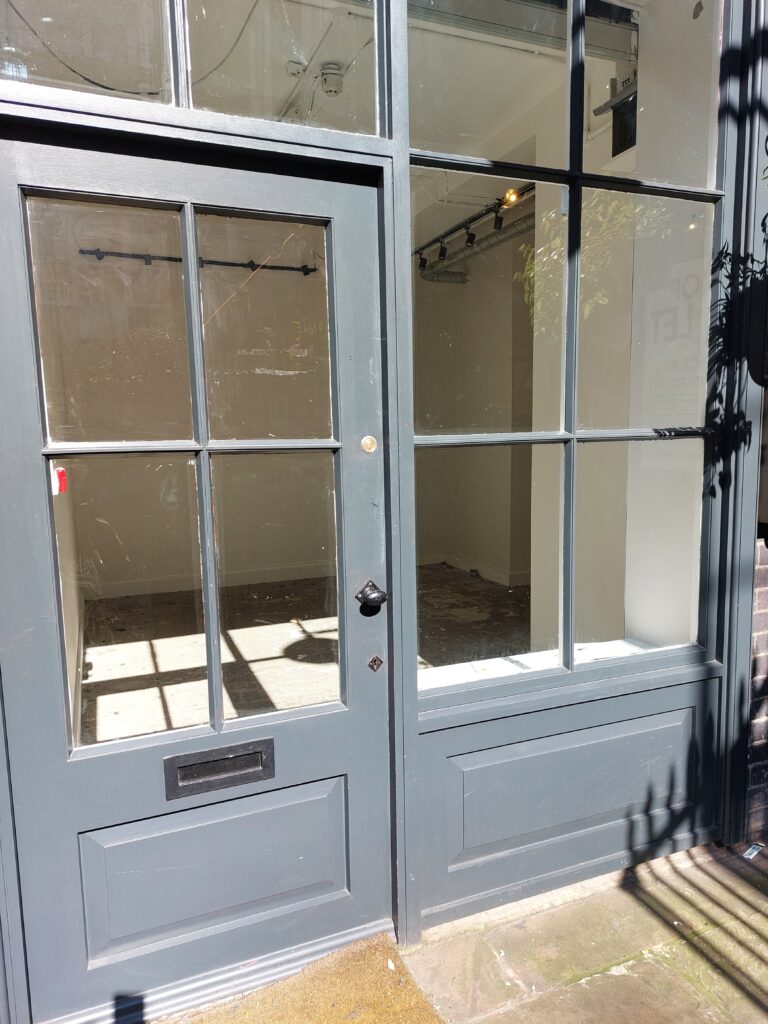
The last night of the Wild Gees in London trip was seeing the luminous Siobhán McSweeney in Dancing at Lughnasa at the National Theatre, the joyous and sometimes tragic story of the women in Brian Friel’s family. And we just about managed not to correct fellow theatre-goers calling it LooNASA.
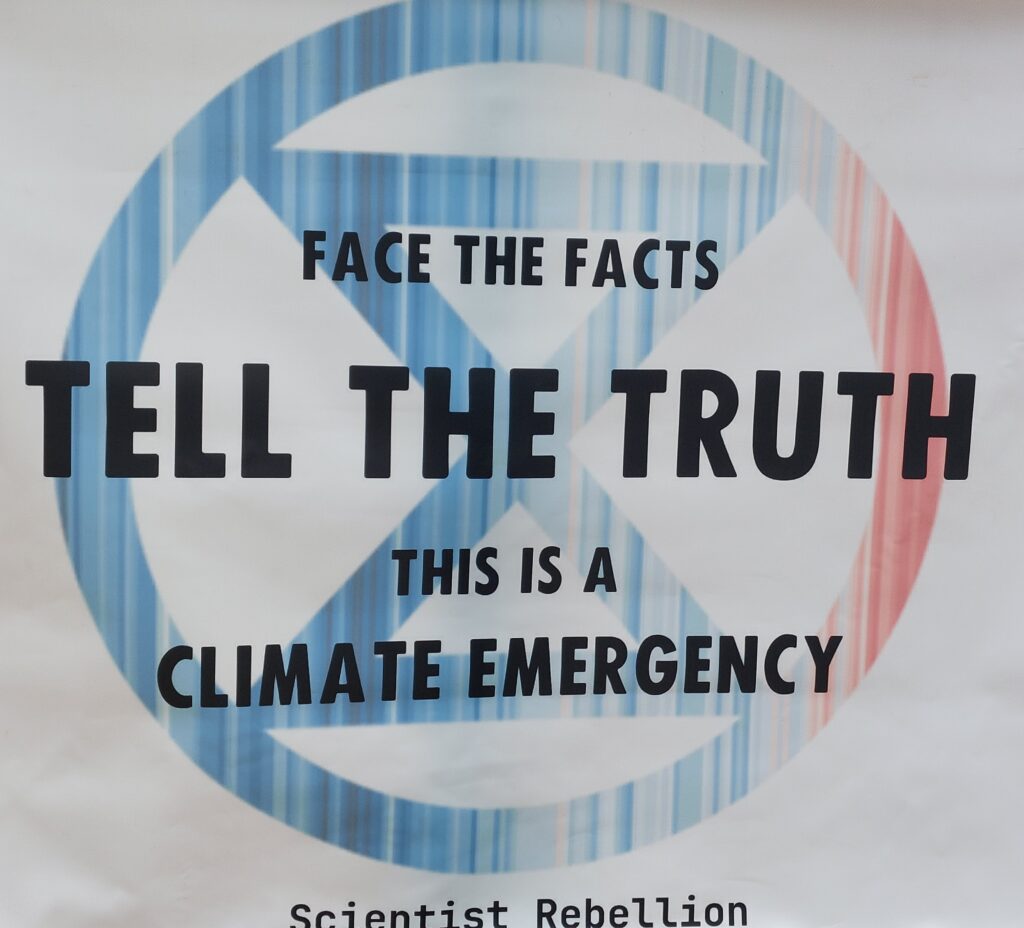
*the planet may not, after all, be saved 🙁
Bibliography
A Tomb with a View, Peter Ross (2020), Headline.
The Crossbones Graveyard and Garden of Remembrance Visitors’ Guide. John Constable, Katy Nicholls, Hannah reeves, Jennifer Cooper, Megan Brickley, Matt Wilcock, Magan Elias.
Tarot Original 1909, by Arthur Edward Waite and Pamela Colman Smith. Companion book by Sasha Graham (2022). Lo Scarabeo.
The Second Shelf, Rare Books and Words by Women. Issue 2. Autumn 2019.
Photos: all by the Wild Gees CC-BY-SA, except Pamela Colman Smith by The Craftsman magazine CC-BY-SA 4.0 (on Wikimedia Commons)

